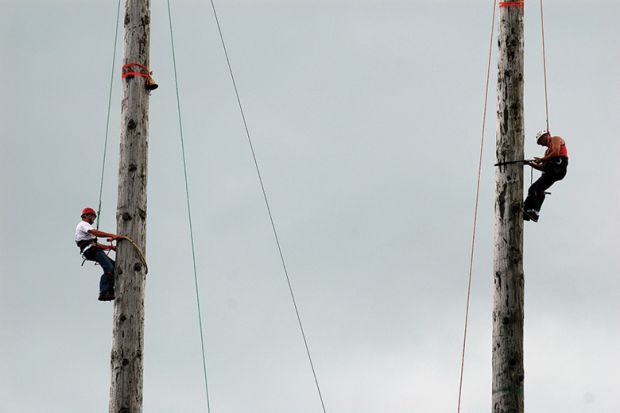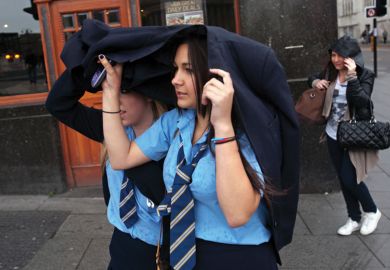The gap between the proportion of state and private school pupils entering higher education has widened since the introduction of £9,000 fees, according to government figures.
An estimated 62 per cent of those who studied A levels and equivalents in state schools at age 17 in 2011-12 progressed to higher education by age 19 in 2013-14, according to figures on widening participation in England published by the Department for Education on 3 August.
For independent school and college pupils, the estimated progression rate was 85 per cent.
The government trebled fees to £9,000 in 2012-13.
The proportion of state pupils entering higher education by age 19 stood at 67 per cent in 2011-12, fell to 66 per cent in 2012-13 and to 62 per cent in 2013-14.
The proportion of private school pupils entering higher education was static at 85 per cent over that period.
That meant that the participation gap between private and state pupils widened from 18 percentage points to 23 over that time.
The figures also show that 22 per cent of free school meal pupils aged 15 in 2009-10 entered higher education by age 19 in the 2013-14 academic year. That compared with 39 per cent of non-free school meal pupils who did so: a gap of 17 percentage points.
“The gap was 18 percentage points for the 2009-10 to 2011-12 cohorts and 17 percentage points for the 2012-13 cohort,” says the DfE analysis.
On the proportions of private and state pupils progressing to the “most selective” institutions, the figures say that 64 per cent of private school pupils did so by age 19 in 2013-14, compared with 23 per cent of those from state schools.
That gap between private and state pupils has risen from 39 percentage points in 2011-12 to 41 in 2013-14.
Pam Tatlow, chief executive of MillionPlus, the association of modern universities, said: “Despite the marginal decline in the number of students in receipt of free school meals progressing to higher education shown in [the] figures, we very much welcome the upward trend in the progression of these and other students to higher education.
“This progress would not have been possible without the contribution of modern universities to widening participation. The pace of change in the so-called selective universities remains both glacial and small in terms of the number of admissions of students from widening participation backgrounds. These figures confirm that modern universities are key to the achievement of the new prime minister’s ambitions to improve social mobility.”
Ms Tatlow suggested that the “current performance measure which links progression to the 30 most selective universities was introduced by [former education secretary] Michael Gove. As such, it is a fairly crude and reductive measure which undervalues the achievements of the overwhelming majority of students and schools as well as the universities to which these students progress.”
She said that the Department for Education should reconsider the way it measures social mobility.
Register to continue
Why register?
- Registration is free and only takes a moment
- Once registered, you can read 3 articles a month
- Sign up for our newsletter
Subscribe
Or subscribe for unlimited access to:
- Unlimited access to news, views, insights & reviews
- Digital editions
- Digital access to THE’s university and college rankings analysis
Already registered or a current subscriber?






